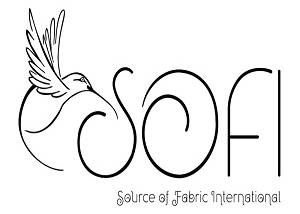When choosing fabrics for your clothing line or personal wardrobe, cost is often a significant factor. But is French Terry more expensive than cotton? Understanding the pricing dynamics between these two popular fabrics can help you make informed decisions for your next purchase or project. In this article, we’ll dive deep into the cost comparison of French Terry and cotton, exploring the factors that influence their prices and how you can get the best value for your money.
Understanding the Basics: What Are French Terry and Cotton?
To better understand the cost differences, it’s important to know what French Terry and cotton are.
French Terry is a knit fabric with a soft, looped texture on one side and a smooth surface on the other. It is typically made from cotton but can include a blend of other fibers like spandex or polyester. This fabric is highly valued for its comfort, breathability, and versatility, often used in casual wear and activewear.
Cotton, nevertheless, is a naturally occurring fiber that comes from the cotton plant. One of the most widely used textiles in the world, it is renowned for being reasonably priced, soft, and durable. Cotton is versatile and can be woven or knitted into various fabrics, including jersey, muslin, and twill.
Is French Terry More Expensive Than Cotton?
In general, French Terry tends to be more expensive than basic cotton fabrics. However, this is not a strict rule, and several factors can influence the cost difference:
- Fabric Composition: While both French Terry and basic cotton fabrics are often made from cotton, French Terry’s unique knit structure, which requires more intricate manufacturing, can lead to higher production costs. If French Terry includes additional fibers like spandex, it can further increase the price.
- Weight and Thickness: Generally speaking, French Terry is a mid-weight fabric that provides greater warmth and durability than lighter cotton materials. The additional material used in creating the loops on one side of French Terry also contributes to its higher cost.
- Brand and Quality: The cost of both French Terry and cotton fabrics can vary widely depending on the brand and quality. High-quality, organic cotton might cost more than lower-grade French Terry, but generally, premium French Terry will still be pricier due to its specialized construction.
- Market Demand: French Terry’s popularity in activewear and loungewear has driven up demand, which can result in higher prices compared to more readily available basic cotton fabrics.
- Production Scale: Cotton is produced on a massive scale worldwide, leading to economies of scale that keep prices relatively low. French Terry, being a more specialized fabric, is produced in smaller quantities, often resulting in higher prices.
Cost vs. Value: Why French Terry Might Be Worth the Extra Expense
While French Terry may be more expensive than some cotton fabrics, the added value it provides can justify the cost. Here’s why:
- Comfort and Versatility: French Terry offers a unique combination of softness, warmth, and breathability, making it ideal for various clothing items, from sweatshirts to joggers. Its versatility can provide better value per wear compared to basic cotton.
- Durability: The mid-weight nature of French Terry means it often lasts longer than lighter cotton fabrics, providing better long-term value. This durability is especially important in activewear, where garments are subjected to frequent wear and washing.
- Style and Aesthetics: The textured, looped side of French Terry adds a stylish, casual look that can elevate the design of clothing items. If aesthetics are important to you or your customers, the extra cost may be worth it. Read More About What is French Terry Fabric? 7 Facts You Need to Know!
How to Get the Best Deal on French Terry and Cotton Fabrics
Whether you’re looking for French Terry or cotton, there are ways to get the best value for your investment:
- Buy Wholesale: Purchasing fabrics in bulk can significantly reduce the cost per yard. At SOFI, we offer competitive pricing on French Terry and cotton fabrics through our wholesale fabric supplier services.
- Consider Blends: Sometimes, a blend of French Terry with other fibers can offer similar benefits at a lower cost. Explore options that meet your needs without breaking the bank.
- Shop Around: Prices can vary between suppliers, so it’s worth comparing different sources to find the best deal. Remember to consider factors like shipping costs and minimum order quantities.
Conclusion
So, is French Terry more expensive than cotton? Generally, yes, but the price difference comes with added benefits like comfort, durability, and versatility. Understanding these factors can help you choose the fabric you need best. Whether you opt for French Terry or cotton, SOFI’s wholesale fabric supplier services help you find high-quality materials at competitive prices. Explore our collection today and make your next project a success.


